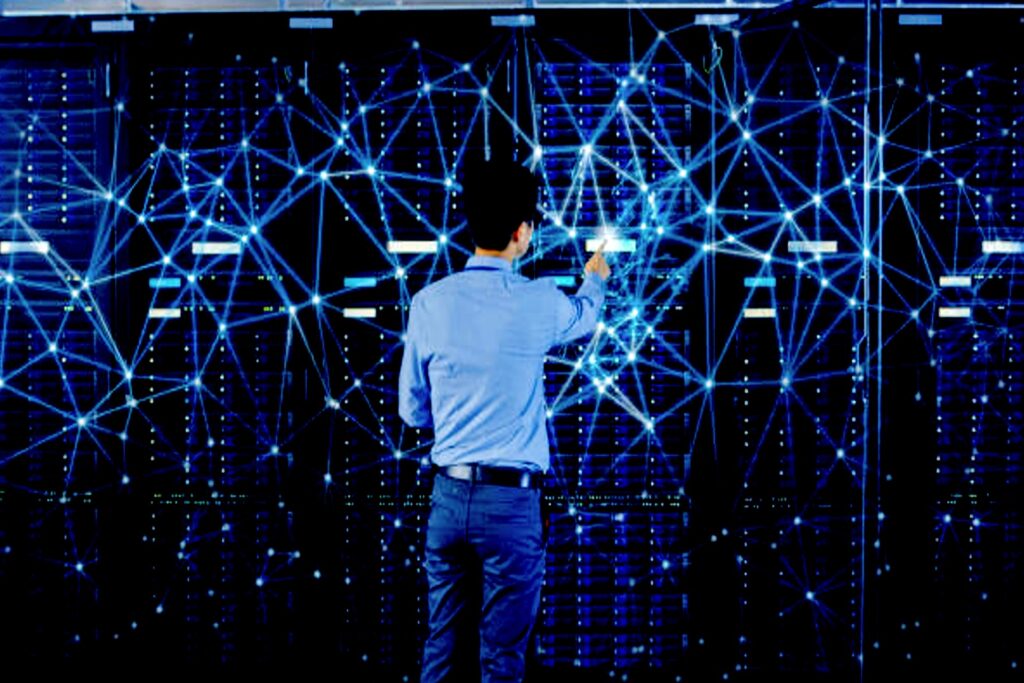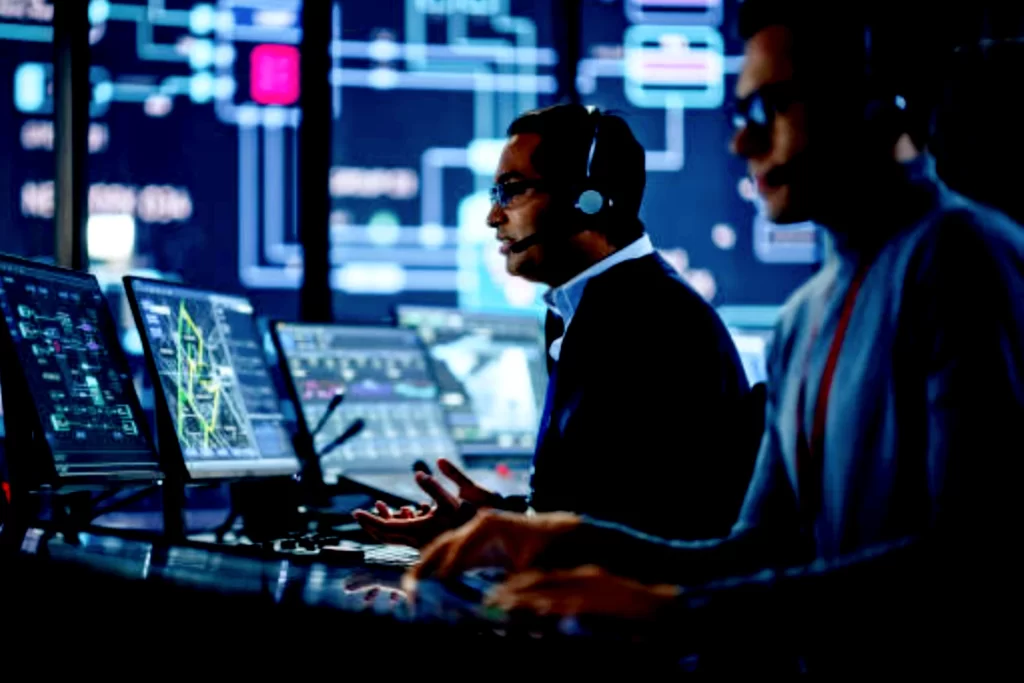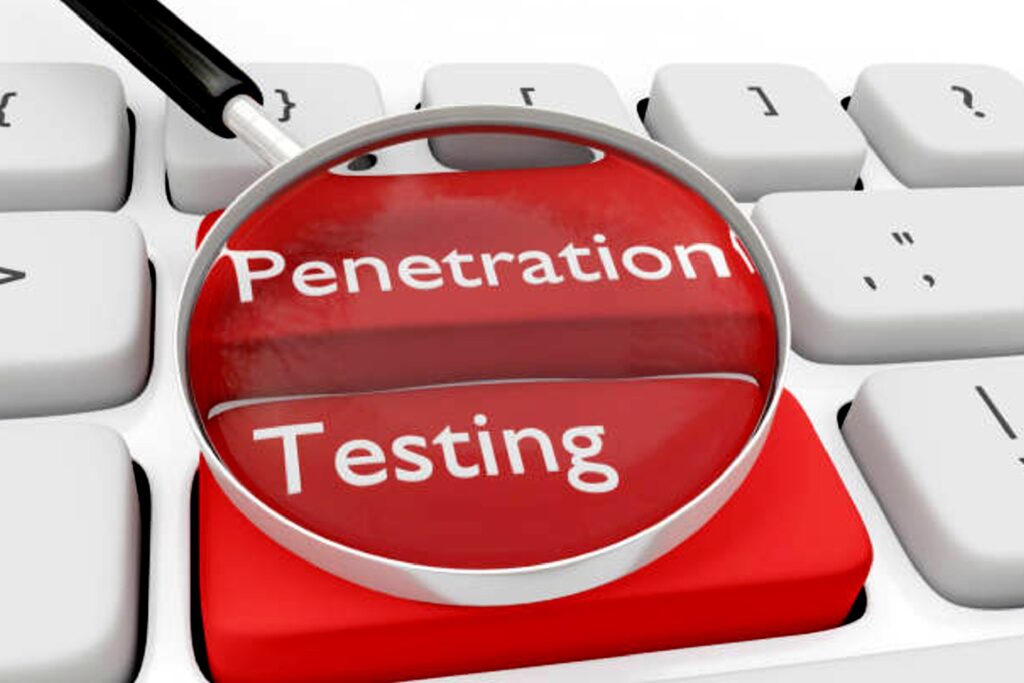Physical security means keeping people and things safe from harm. It’s like keeping your toys safe when you’re not playing with them. There are many ways to do this. For example, having a fence around your buildings or key assets.
In the same way, businesses and organizations use things like cameras, security guards, and doors that lock to keep their buildings and things inside safe.
It’s important to ensure that only the right people can enter and that no one can steal or damage anything. That’s what physical security is all about.
What is physical security?
Physical security also includes measures to protect against natural disasters such as floods, fires, and earthquakes. For example, a building may have special walls or roofs to keep out water or fire. Businesses and organizations also use alarms and sprinklers to alert people and put out fires. It’s important to have a plan in case of an emergency, like knowing where the exits are and what to do if there is a fire.
Physical security is also a way to protect against people who might want to harm others. This could be through using metal detectors, security cameras, and having security personnel on site.
In addition, this can help to keep people safe and prevent things like theft and violence. In a nutshell, physical security is all about keeping people and property safe from harm by using different tools and measures.
Another vital aspect of physical security is protecting sensitive information and equipment. This can include using security cameras to monitor sensitive areas, using security locks to protect equipment and data, and implementing strict access controls to ensure that only authorized personnel have access to sensitive information.
Physical security also involves protecting against cybersecurity threats, such as installing firewalls, intrusion detection systems, and encryption to protect networks and data.
Physical security is an important part of keeping people and property safe. It involves using a combination of different tools and measures to protect against different types of threats.
These include measures to protect against natural disasters, theft, violence, and cyber security threats. It is important for businesses and organizations to regularly review their physical security measures. This can save you. Especially when you make decisions to do update as needed to ensure your Company’s security effectiveness.
Physical security controls
What are physical security controls? These are ways to protect a building or area from people who should not be there. Physical controls can include things that you could use to deter intrusion like: locks, cameras, and guards.
Locks keep doors closed so only people with a key or code can enter. Cameras are like eyes that watch and record what is happening. Guards are people who watch and make sure everything is safe.
Fences and gates can be used to keep people out of an area. They can also be used to keep things in, like animals or equipment.
Alarm systems can alert people if someone breaks in. They make loud noise and can call the police.
Lighting can also be used to make sure an area is well-lit. This makes it harder for someone to hide and easier for people to see what is happening.
All these controls work together to keep a building or area safe. They keep people who should not be there out and make sure that people inside are protected.
Network Segmentation
Network segmentation is like making different rooms in a big house. Each room has its own purpose, and you only let certain people in each room.
In a computer network, different parts of the network can be separated into different segments. This way, if something goes wrong in one segment, it doesn’t affect the whole network.
For example, in a big office building, different floors might have different purposes. The first floor might be the lobby and reception area, the second floor might be for meetings, and the third floor might be where the workers have their desks.
Similarly, in a network, one segment might be where the company stores important files, another segment might be for email, and another segment might be for the website.
By segmenting the network, it becomes harder for someone who shouldn’t be there to access sensitive information. It’s like a stranger can’t enter the office without permission, similarly, someone who shouldn’t be on the network can’t access sensitive information without permission.
It also makes it easier to find problems if something goes wrong. If the internet is not working on one floor, it’s easy to tell which floor is having the problem. Similarly, if there’s a problem with one segment of the network, it’s easy to tell which segment is having the problem.
Overall, network segmentation is a way to keep a computer network safe and organized. It helps protect sensitive information and makes it easier to find and fix problems.
Physical Security Firewall
A physical security firewall is a way to protect a building or area from fire. It’s like a wall that keeps the fire from spreading.
A physical security firewall can be made of different materials, like metal or concrete, and it’s placed in certain areas of the building to keep fire from spreading.
For example, a firewall can be placed between the kitchen and the rest of the house to keep the fire in the kitchen from spreading to the rest of the house.
It can also be placed between the garage and the rest of the house to keep the fire in the garage from spreading to the rest of the house.
Firewalls can also be placed in a building to keep the fire from spreading from one room to another. This helps to keep the fire in one area and prevent it from spreading to other parts of the building.
It’s important to have physical security firewall in a building because it can save lives and protect property from damage.
It’s similar to having fire extinguisher in the house, it can be used to put out small fires before they spread and cause more damage.
Overall, physical security firewall is an important way to protect a building or area from fire. It helps keep the fire in one area and prevent it from spreading to other parts of the building.
Intrusion Detection and Protection System
An Intrusion Detection and Protection System, or IDPS, is like a superhero for your computer. It helps keep bad people from breaking into your computer and doing bad things.
An IDPS can work in two ways: it can find bad people trying to break in, or it can stop them from getting in.
It does this by always watching your computer for anything strange. If it sees something it thinks is bad, it will send you a warning to let you know that something might be wrong.
It’s like a superhero that has super powers to sense danger, and when it senses danger it will come to the rescue to protect you.
It’s important to have an IDPS on your computer because bad people can try to get into your computer in many different ways, like guessing your password or tricking you into clicking on something bad.
An IDPS can be a program that you put on your computer or it can be a service that your internet company gives you. It’s like having a superhero for your computer, always ready to save the day.
Secure Communication Protocol
A Secure Communication Protocol is like a secret code for your computer. It helps keep your information safe when you talk to other computers.
When you send information, like an email or message, it goes through the internet to the other computer. A Secure Communication Protocol makes sure that only the right people can read and understand the information.
It does this by making sure that the information is scrambled up like a puzzle before it is sent, so that bad people can’t understand it. And the other computer uses a special key to unscramble the information, so that it can be read.
It’s like when you have a secret code with your friends, only you and your friends know how to read the code and understand the message.
It’s important to use a Secure Communication Protocol when you send information online because bad people can try to steal your information when it travels through the internet.
A Secure Communication Protocol can be a built-in feature of the software you use for communication like your email or chat client, or it can be a separate program that you add to your computer. It’s like having a secret code for your computer to protect your information when you talk to other computers.
Patch Management
Patch Management is like getting a check-up for your computer. It helps keep your computer healthy and working well by fixing any problems that are found.
Your computer has many different parts, like the brain and the heart, that work together to make your computer run. Sometimes, these parts may have small problems that can cause big trouble if they’re not fixed. Patch management helps fix these problems by updating and patching the different parts of your computer.
It does this by finding the problems and then downloading and installing small fixes, called patches, to repair the problems. This process helps keep your computer running smoothly and securely.
It’s like when you go to the doctor for a check-up. The doctor checks your body to see if there are any problems and gives you medicine or treatment to fix them.
It’s important to do patch management on your computer because hackers and bad people can try to take advantage of these small problems to break into your computer and steal your information.
Patch management can be done automatically by your computer or by a software that you install on it. It’s like getting a regular check-up for your computer to keep it running well and safe.
Password Policy
A Password Policy is like a secret code for your computer. It helps keep your information safe by making sure that your passwords are strong and hard for bad people to guess.
A password is like a secret code that you use to open your computer or an account. It’s important to have a strong password that is hard for bad people to guess. A Password Policy helps you create strong passwords and also helps you to change them regularly.
It does this by setting rules for creating passwords like using a mix of letters, numbers and special characters, setting a minimum length of characters, and enforcing regular password changes. This makes sure that your passwords aren’t easy to guess and that they are changed often, so that bad people can’t use them to get into your accounts.
It’s like having a secret code for your diary, you want to make sure that your secret code is hard for others to guess and you change it often.
It’s important to have a password policy because bad people can try to guess your password to break into your computer or accounts and steal your information.
A Password Policy can be set by the organization you work for, or it can be a built-in feature of the software you use. It’s like having a set of rules for creating secret codes to keep your information safe.
Least Privilege Access
Least Privilege Access is like a special key for your computer. It helps keep your information safe by only giving people the access they need to do their job.
When you use a computer, you have different levels of access. Some people have access to everything, while others have access to only specific things. Least Privilege Access makes sure that people only have access to what they need to do their job.
It does this by giving people the minimum level of access necessary for them to do their work. This means that people can only see and use the things they need and can’t see or use things they don’t need, which helps keep your information safe.
It’s like when you go to a friend’s house. You might have permission to use the living room, but not the bedroom.
It’s important to have Least Privilege Access on your computer because bad people can try to use other people’s access to break into your computer and steal your information.
Least Privilege Access can be set by an administrator or IT department of an organization, or it can be a built-in feature of the software you use. It’s like giving people special keys for different parts of your computer to keep your information safe.
Security Monitoring
Security Monitoring is like having a security camera for your computer. It helps keep your information safe by watching for anything suspicious.
When you use a computer, there’s a lot of activity happening all the time. Security monitoring keeps an eye on all of this activity and looks for anything that could be a problem.
It does this by constantly watching the computer and all of its activity, such as network traffic, system logs, and user behavior, it will be able to detect any unusual or suspicious activity that could indicate a security breach. If it sees anything suspicious, it will send an alert to let you know that something might be wrong.
It’s like having a security camera in your house, it’s always watching and if it sees something suspicious, it will let you know.
It’s important to have Security Monitoring on your computer because bad people can try to break into your computer and steal your information.
Security Monitoring can be done by software that you install on your computer, or it can be a service provided by your internet service provider. It’s like having a security camera for your computer, always watching to keep your information safe.
Incident Response Plan
An Incident Response Plan is like a fire drill for your computer. It helps you be prepared for when something bad happens and know what to do to keep your information safe.
An Incident Response Plan is a set of instructions that tells you what to do if something bad happens to your computer, like if it gets a virus or if someone breaks in. It helps you know what steps to take to fix the problem and keep your information safe.
It does this by outlining different scenarios that could happen and the steps that need to be taken to respond to them. This allows you to be prepared and have a plan of action in case something bad happens.
It’s like having a fire drill at school, where you learn what to do in case of an emergency, this way you are prepared and know what to do.
It’s important to have an Incident Response Plan on your computer because bad things can happen and you want to be prepared to keep your information safe.
An Incident Response Plan can be created by an organization or by an individual. It’s like having a plan for what to do in case of an emergency, to keep your information safe.
Risk Assessment And Audit
Risk assessment and audit are simply check-up for your computer’s safety. It helps you find out if there are problems with how you store your information safe. It also shows you what you can do to fix them.
A risk assessment is looking at all ways bad people could try to break into your system and steal information. An audit is when you check to ensure that you’re doing everything you can to keep your information safe.
It identifies potential vulnerabilities and threats, evaluating the likelihood and impact of these risks. Implementing the right controls to mitigate them is also part of audit. Audit is a process of reviewing the security measures that are in place. This ensures that they are working correctly and effectively.
It’s like when you go to the doctor for a check-up, the doctor checks your body to see if there are any problems and gives you advice on how to stay healthy.
It’s important to do a Risk Assessment and Audit on your computer because bad people are always trying to find new ways to break into computers and steal information.
A Risk Assessment and Audit can be done by an organization or by an individual. It’s like getting a check-up for your computer’s safety to make sure that everything is working correctly.
Cyber Security Awareness Training
Cyber Security Awareness Training is like learning how to stay safe on the internet. It helps you learn how to keep your information safe when you’re online.
When you use the internet, there are a lot of things you need to be aware of to stay safe. Cyber Security Awareness Training helps you learn about these things so you can protect yourself.
It does this by teaching you about things like how to create strong passwords, how to spot phishing scams, and how to stay safe on social media. It also teaches you about being aware of the potential risks and how to avoid them. This helps you stay safe and protect your information when you’re online.
It’s learning how to stay safe when you’re online and learning about things to watch out for. And most importantly, how to stay safe.
It’s important to have cyber security awareness training because bad people are always finding new ways to steal information online.
Cyber Security Awareness Training can be done by an organization or by an individual. It’s like learning how to stay safe on the internet to protect your information.
Your Takeaway
In conclusion, physical security simply put keeping people and things safe from harm. It is your first line of defense keeping your assets safe. There are many ways to do this. However, having a fence around your buildings or key assets can go a long way.
Like most other security breaches, physical security is also susceptible to human errors. Therefore, it is important to do regular reviews and offer adequate training to staff. This will produce greater security awareness and boost your company’s security posture.




